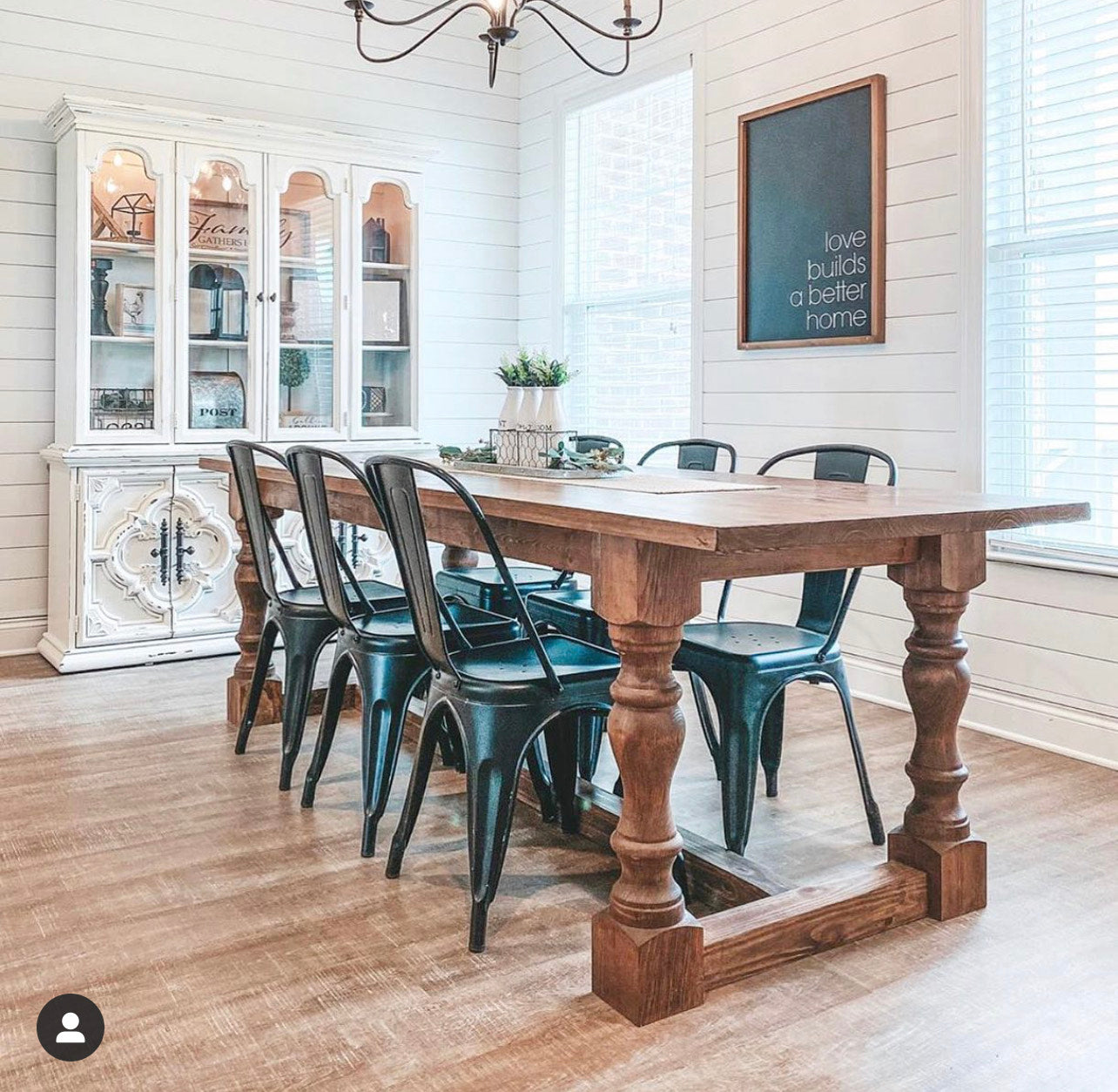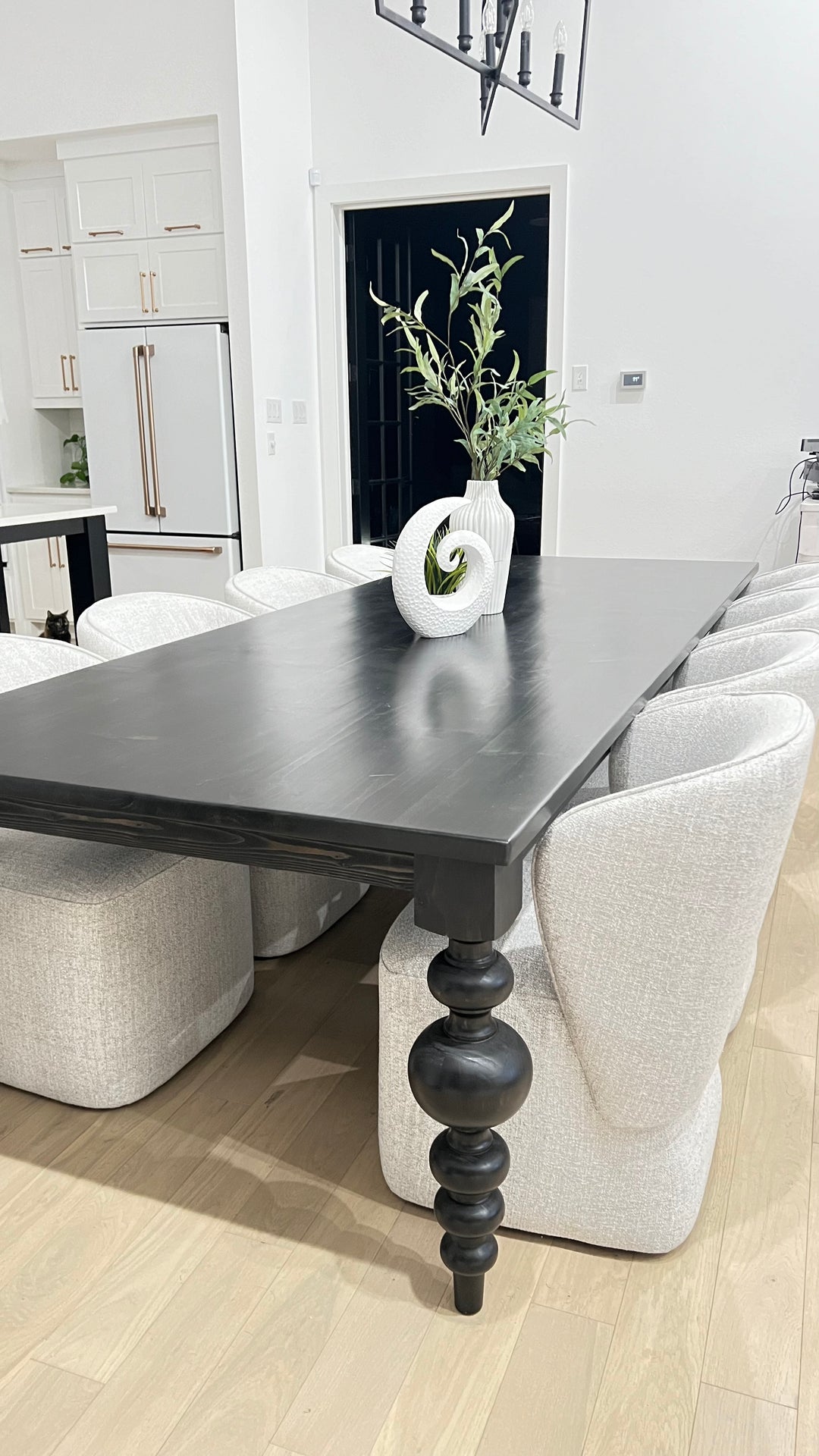Tips for Installing Dining Room Table Legs for a Modern Look
Tips for Installing Dining Room Table Legs for a Modern Look
Blog Article
Professional Tips for Putting Up Dining-room Table Legs for Optimum Security
When it comes to mounting dining area table legs, achieving optimum stability is extremely important for both functionality and aesthetics. What details methods can boost stability also further?
Pick the Right Legs
When selecting the suitable legs for your dining-room table, it is necessary to think about both performance and visual appeals. The legs you choose will dramatically impact the overall layout and security of the table. Evaluate the table's intended use; if you expect regular events, stronger legs, such as those made from strong timber or steel, might be extra ideal, as they use raised resilience and support.
Next, take into consideration the height and design of the legs in regard to the table top. Standard eating tables usually range from 28 to 30 inches in height, so ensure the legs align with this standard for comfort. The style of the legs should complement the design of the table top-- whether it be modern-day, rustic, or standard. For circumstances, tapered legs can add a modern touch, while transformed legs may communicate an extra timeless aesthetic.

Select Appropriate Hardware
Just how can the best equipment enhance the security and longevity of your dining-room table? The option of proper equipment is essential to making sure that the legs of your table are securely affixed and able to endure normal use. High-grade screws, bolts, and brackets supply the necessary toughness to sustain the weight of the table, as well as any added lots placed upon it during dishes or events.
When choosing screws, select those made from durable materials such as stainless steel or brass, which stand up to rust and keep integrity over time. The length of the screws is just as important; they ought to penetrate deeply right into the table's structure without compromising integrity. For bolted connections, consider utilizing lock washing machines to stop loosening because of vibration or motion.
In addition, making use of edge brackets can add added assistance, particularly for larger tables or those with heavier tops. These braces disperse weight uniformly and assist keep the table's form. Making certain that the equipment you select is ideal for the particular materials of your table will certainly additionally enhance its general stability and durability, enabling you to enjoy your dining experience for many years ahead.
Ensure Appropriate Alignment
Appropriate placement of dining space table legs is crucial for both aesthetic allure and practical security. To accomplish optimal positioning, start by measuring the range from the table's edges to the leg attachment points.
Make use of a degree throughout installation to verify that each leg is vertical to the tabletop. This action is critical, as even minor discrepancies can rise right into considerable security problems gradually. It is recommended to mark the preferred leg positions on the underside of the table with a pencil or concealing tape prior to safeguarding them. This method acts as an aesthetic overview, allowing for modifications as required.
Furthermore, double-check the placement after the initial screws are tightened, as adjustments may be required prior to completely protecting the hardware. By prioritizing appropriate positioning, you not only improve the table's overall style but also ensure that it continues to be stable and useful for many years to find.

Think About Weight Distribution
After ensuring correct positioning of the dining-room table legs, it's essential to think about weight circulation to enhance stability and capability. dining room table legs. Proper weight circulation is critical in stopping wobbling and ensuring that the table can support its desired tons without threat of tipping or breaking down
When positioning the legs, ensure they are placed at equivalent distances from the facility of the table to uniformly distribute the weight across have a peek here the framework. Consider the weight of the table top and any type of items that will regularly hinge on it, such as tabletop appliances or attractive pieces. Tables with larger surfaces must ideally have legs located closer to the edges, as this optimizes the base of support and minimizes the threat of instability.
Additionally, if the table is planned for use in a high-traffic area, consider making use of heavier materials for the legs or adding stabilizing discover here components, such as cross-bracing or a lower shelf - dining room table legs. These changes can assist preserve equilibrium and prevent moving throughout usage. Eventually, a well-considered weight distribution technique will substantially enhance the table's general efficiency, guaranteeing it continues to be a functional and attractive focal point for your dining room
Test Stability Before Use
Examining the stability of the dining room table prior to usage is a crucial action that must not be ignored. If the table reveals instability, recognize the legs or joints that might need adjustment.
Next, check that all bolts and screws are tightened up correctly. Loose connections can lead to instability and potential damages gradually. If essential, utilize wood adhesive on joints to improve security, making sure to allow ample drying out time.
Conclusion
Finally, the installation of dining-room table legs requires cautious factor to consider of materials, weight, equipment, and alignment circulation to achieve maximum security. By picking top notch bolts and sturdy legs, making certain specific placement, and distributing weight evenly, the structural integrity of the table can be significantly enhanced. Carrying out a security examination prior to routine usage additionally makes certain that the table will certainly stand up to daily stress, thus supplying a risk-free and trustworthy eating experience.
When it comes to setting up dining space table legs, accomplishing maximum stability is extremely important for both functionality and aesthetic appeals. The legs you select will considerably influence the overall design and security of the table (dining room table legs). Typical eating tables normally range from 28 to 30 inches in elevation, so guarantee the legs align with this standard for comfort.Proper alignment of eating area table legs is necessary for both aesthetic charm and functional security.In conclusion, the setup of eating area table legs needs cautious consideration of materials, equipment, positioning, and weight distribution to achieve optimum stability
Report this page